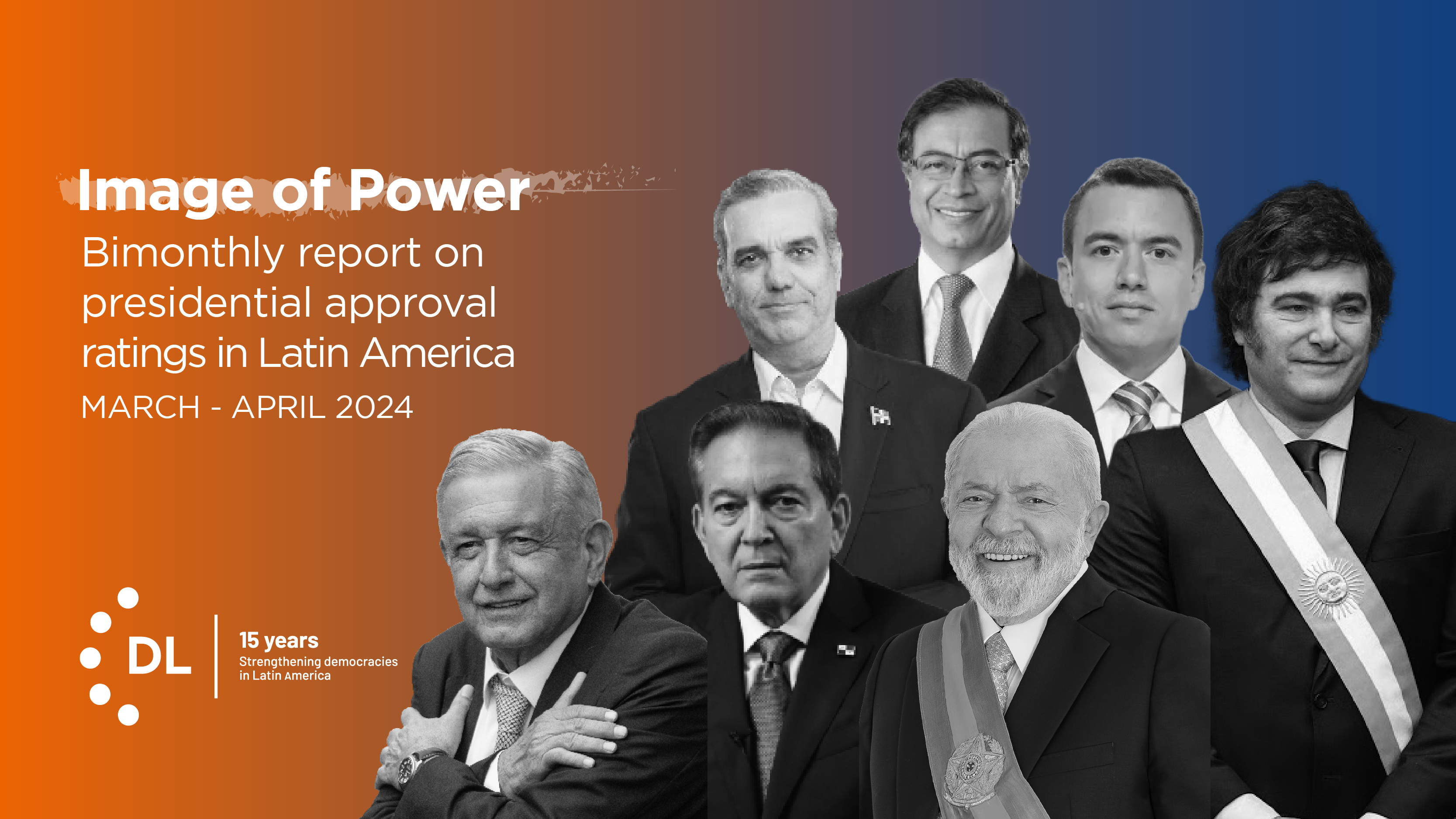Intriguing trio: public perceptions of Milei, Lula, and Petro

In this edition of Image of Power we take a look at an intriguing trio, made up of Javier Milei (Argentina), Lula da Silva (Brazil) and Gustavo Petro (Colombia), to see what happens with citizen support in the face of the particular circumstances that each country is going through in economic terms, in its congresses and, also, in the streets.
Javier Milei’s popularity level has practically not moved since he began his presidency in December 2023, thus contradicting analyses that raised the possibility of a strong attrition. Although economic indicators show the deep effects of the recession, the government is able to credit a management achievement and knows how to capitalize on it: the deceleration of inflation.
In Brazil, Lula Da Silva faces the opposite situation. Economic indicators show an increase in employment and labor income. However, the rising cost of food is impacting his image, even among his own voters. Today he is 10 points below the approval level of his first 12 months in office.
In the last four months, Gustavo Petro held steady at 36%, a 6% rebound. Despite the failure in Congress of his health care reform bill, one of the government’s flagships, the president seems to have gained initiative with direct appeals to the citizenry.
To understand why Milei holds his ground, Lula loses and Petro wins, it is key to analyze who capitalizes on the government’s setbacks. In a highly polarized scenario such as Brazil’s, mistakes are opportunities for a strengthened Bolsonarism. In Argentina, the same is not true. The opposition is more fragmented and is still too battered by the last elections to gain ground at the expense of unforced errors. Neither in Colombia. Petro failed to sustain his alliances but the opposition spectrum is divided. In this article we analyze it in depth.
